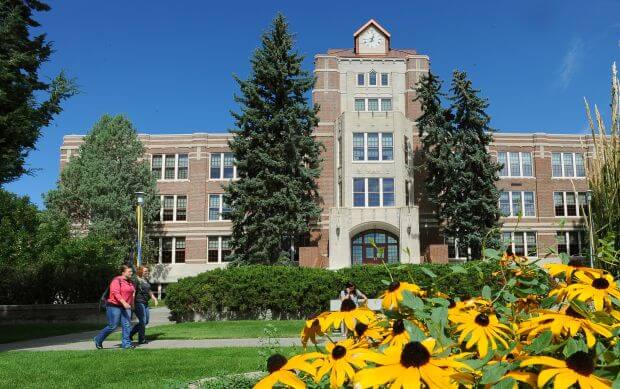
Montana State University, Billings Accreditation Details
• Northwest Commission on Colleges and Schools
• AACSB
• Commission on Accreditation of Athletic Training Education
• National Association of Schools of Music
• National Association of Schools of Art and Design
• Commission on Rehabilitation Education
Montana State University at Billings Application Requirements
First year students must fill out and submit the application form online, or print it out and submit it by regular mail, along with a $30 non-refundable application fee and required documents. You will need to have your high school transcript, your GED record or the ACT Compass score sent to the school as well. You should direct the testing facility to send your ACT or SAT results directly to the school. The minimum ACT score required is 20, and the minimum SAT composite score of 1440. If you have completed any college-level courses, you need to submit those transcripts too. All students are required to present their immunization records. In-state students must have taken secondary courses that complete the Regents College Preparatory Program, which consists of mandatory credits in math, English, the sciences and other classes. You should demonstrate mathematical aptitude through a score of 22 or higher on the ACT math component or 520 on the SAT math assessment. The school also requires a writing proficiency. Students who do not meet the minimum requisites for admission may be admitted provisionally to a four-year program or without provision to a two-year program.
Graduate students must complete the graduate student admission form and submit it, along with a photocopy of their admission test scores and their official transcripts from baccalaureate programs. They must also include three letters of recommendation and a $40 application fee. Certain programs may require a letter of intent and/or a resume.
Tuition and Financial Aid
Tuition at Montana State University at Billings at City College is $3,810 a year plus room and board and other fees. The total for a year at this two-year college is $16,730. Tuition at the university campus is $5,810 for undergraduate resident students. When room and board, as well as other fees and expenses, are added, the total for a year is $18,730. Non-resident undergraduate tuition is $17,920 and the total with other fees is $30,850. The university participates in the Western Undergraduate program which allows students who live in certain western states to get reduced tuition. The annual undergraduate total for that program is $21,050. If you are a resident graduate student, you can expect to pay $17,930 per year. Out-of-state graduate costs are $27,800.
If you need assistance paying for your education, as most students do, you should first submit a FAFSA. That federal form calculates how much aid you will need after your family contribution is subtracted from the actual cost of attending the university. Within two weeks, you should receive your awards letter. The letter will tell you which grants and loans you have been awarded and the amount of the award. The award notification may also award you a loan for which you did not apply. You should read the letter carefully and then submit it online to accept the awards. The next step is to apply for other grants and scholarships through the university website. There you will find a listing of all University of Montana financial aid and even application portals to individual scholarships like the Merit and other academic and/or needs-based programs. The website also has a search engine for other financial aid offered privately, or through corporations. Many of these are not needs-based, but are competitive essay entry or have other requisites. If you still have a financial need after receiving these awards, you should investigate student loans offered through lending institutions. They have low interest rates and delayed pay-back options.
Student Experience
Montana State University at Billings is a small state university, with an enrollment of under 5,000. Six hundred students live on campus in one of the housing options, including two- and three-bedroom family units. The NCAA sports teams are called the Yellowjackets. There are clubs and student activities you can investigate as well as a host of outdoor activities. Although the location of the school is urban, the campus is “park-like.” The city offers cultural and recreational events and is greatly supportive of the university community. Billings offers many internships and job opportunities, and there are three campuses in all. Student reviews say the faculty is accessible and willing to help. Still, the reason you probably would choose to study at this school is the great programs.
One of the most popular programs today is in sports management. Montana State University at Billings offers a Master of Science in Athletic Training. This 48-51 credit hour program includes required courses like: Nutrition for Sports and Exercise; Research in Exercise and Sports Science and Psychological Principles. There are courses in medical assessment, both upper and lower extremities, and in therapeutic interventions. Practicum and clinical experiences are important components of the degree program too. In fact, graduation requires 1,000 hours of clinical experience during the two-year program. You will study therapeutic exercise and pharmaceutical interventions. The program contains two capstone options. You can opt for an internship and seminar plus an original research project or the internship and seminar with a thesis.
Related Articles: